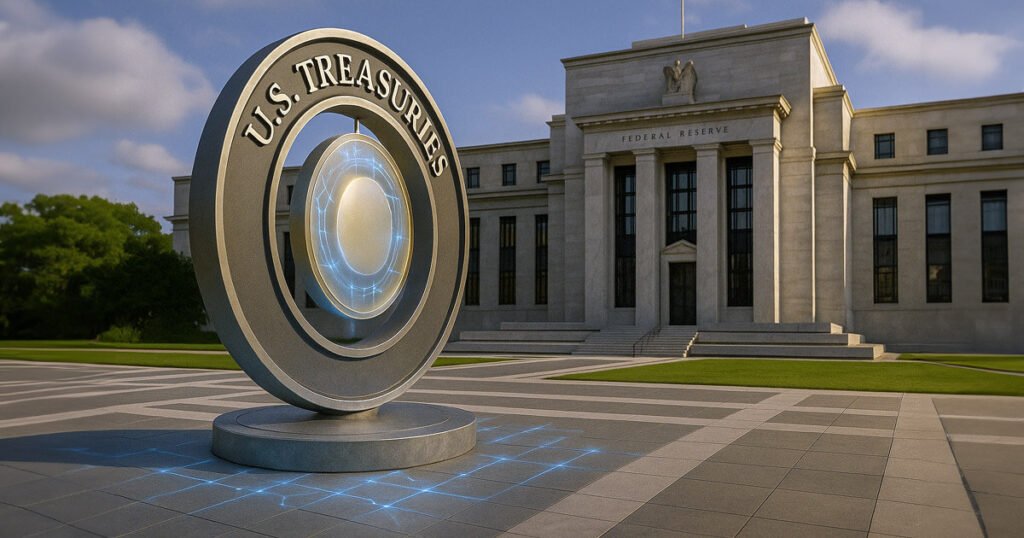Blockchain-based US Treasuries are gaining significant traction, with their value nearing an all-time high of $6 billion. These digital financial instruments function similarly to traditional government bonds but are stored on-chain, providing investors with yield-bearing exposure while leveraging the benefits of blockchain technology. Real-world asset platform RWA.xyz data indicates that tokenized treasuries on public blockchains were valued at $4.01 billion in January and have since grown by over 43% to approximately $5.95 billion, showcasing increasing institutional confidence in blockchain for modernizing fixed-income markets. Ethereum is the dominant blockchain in this sector, hosting $4.3 billion of tokenized Treasuries, followed by Stellar and Solana with $474 million and $273 million, respectively.
The USD Institutional Digital Liquidity Fund, known as BUIDL and managed by BlackRock, has emerged as the market leader in tokenized treasuries. RWA.xyz data reveals that the fund has amassed $2.47 billion in assets under management, representing 42% of the total tokenized treasury space. BUIDL’s value has surged by 92% over the last month, with Ethereum serving as the primary blockchain for the fund, holding over 91% of its supply. The rest is distributed across newer blockchains and Ethereum Layer-2 networks such as Arbitrum, Polygon, Optimism, Aptos, and Avalanche, with Aptos and Avalanche each hosting around $53 million of the fund’s value. Launched in March 2024, BUIDL pays daily dividends generated from short-term US Treasury assets and backs each token one-to-one with the US dollar, offering yield potential akin to Treasuries while functioning as a stablecoin.
BlackRock’s success with the BUIDL fund reflects a broader trend of financial institutions embracing tokenized real-world assets (RWAs). Industry analysts note that tokenized Treasuries serve as a bridge between traditional finance and decentralized ecosystems, prompting other major financial firms to enter the space. Franklin Templeton, for instance, operates a competing tokenized fund valued at $706 million, while Fidelity is preparing to launch “OnChain,” a blockchain-powered version of its Treasury money market fund after filing with the US Securities and Exchange Commission (SEC). This movement towards tokenized assets signals a shift towards blockchain adoption in traditional finance, with institutions recognizing the potential benefits of leveraging blockchain technology in fixed-income markets.
In conclusion, the increasing value and adoption of blockchain-based US Treasuries highlight the growing confidence in blockchain technology for modernizing financial markets. With Ethereum leading the way in hosting tokenized Treasuries, BlackRock’s BUIDL fund has emerged as a market leader, attracting significant assets under management and offering daily dividends backed by short-term US Treasury assets. The rise of tokenized real-world assets and the entry of major financial institutions such as Franklin Templeton and Fidelity into the space underscore the industry’s shift towards blockchain adoption. As financial firms continue to explore blockchain-powered solutions, the potential for blockchain technology to transform traditional finance and enhance market efficiency becomes increasingly clear.


